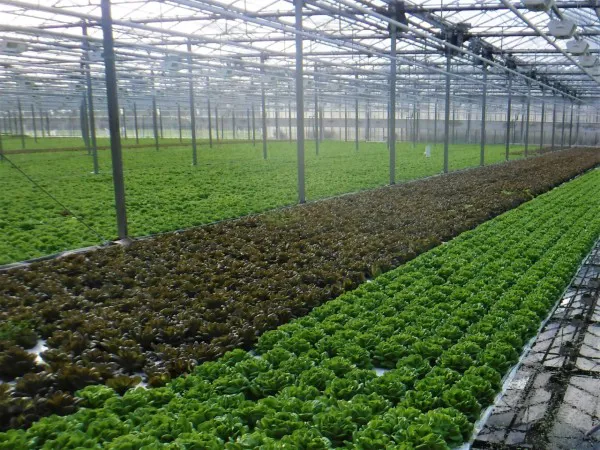“And this is possible”, says Lies van Geest, owner of FreeAir, which his company proves at a grower in the Dutch town of Almere. By splitting up the regular water purification machines into different sections, the water is completely purified every day.
40 Hertz
The first option for water purification is the H2O unit. The system operates on a high ultrasound level. The water vibrates due to the 40 Hertz ultrasound. The high vibration causes algae, viruses, and bacteria in the water to die. “Doing so doesn’t ‘kill’ the water. In fact, it makes the water incredibly clear. The water gets severely ‘shaken up,’ which causes many nanobubbles to form”, Lies explains.
UV, but no concerns about the water
The second option uses UV. The FreeAir UV installations for purifying water are used in many different ways. Lies: “The units process between 2.8 m3 and 17 m3 of contaminated water, always in combination with a standard filter to filter out the filth.”
The differences between the regular UV installations and those of FreeAir? The lights don’t hang in the water, so they can be changed easily without damaging the tubes. Because of this, the lights remain clear and need less energy as well as being more efficient. Lies says: “We can prove this extensively.”
The video below shows how the UV installation works.
Ozone generator
“Bacteria and viruses are killed by exposing the water to ozone using our in-house produced Ozone installation”, says Lies. The installation generates ozone through air filtration. The ozone then goes through the water filtration system. “This installation uses a carbon filter with active carbon in its solid state to catch the remaining pesticides. Black metals are also caught in the system, so the water can then be reused.”
Ionization
Salts and phosphates are often the culprits that get in the way of discharging the water. These types of pollution are removed from the water through ionization, and discharging is no longer required. Lies: “The 4.8 cubic meter block is already done. The next, even bigger, block is about to be launched as well.”
“No water will leave the greenhouse anymore…”
At the moment, FreeAir works on a test in which lettuce is cultivated on water, on ponds. When you circulate your water correctly, you can keep on reusing that same water. A testing site in the Dutch Almere, with a surface area of 16,000 square meters, has been using the same water since 2017. The testing garden doesn’t even have a discharge point anymore. The only water that leaves the testing garden is in the final product: the lettuce. Lies: “I love seeing that because the goal is to develop a completely circular economy within the horticultural sector.”

Lettuce on deep water
Reversed osmosis is not sufficient
“Reversed osmosis works great, but it isn’t sufficient. It still requires lyes and acids, which we don’t really want to use. The effectiveness of reversed osmosis is very low, and many machines are used. This could be done differently. We started thinking about different installations we could use to purify water,” Lies says.
“We supply knowledge + devices”
“In order to provide the grower with the right advice, we first take water samples from the company to test according to our own protocols. These tests are conducted together with Groen Agro Control,” Lies explains. Based on the test results, they identify the problems. “We then differentiate ourselves from our competitors by not recommending just one device, but a set of devices. We provide non-committal advice and hope to be of help.”
For more information:
FreeAir
www.free-air.nl
[email protected]
+31(0)6 – 53 21 87 54
